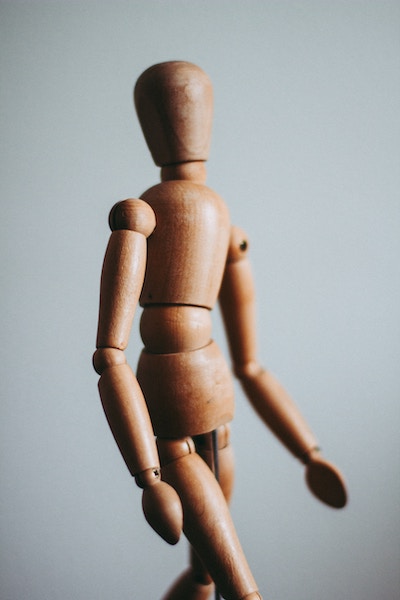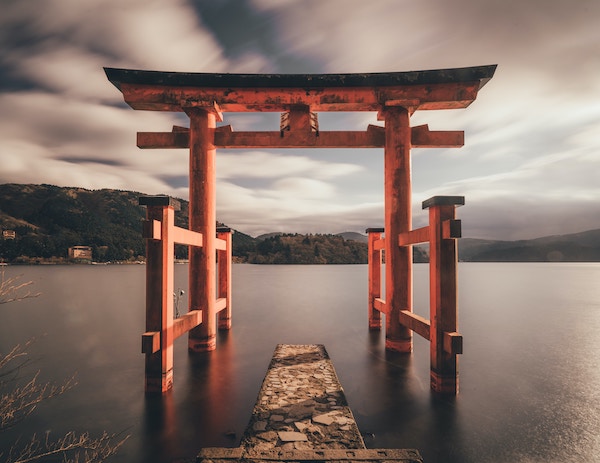“It is not easy to sit on a cloud when you have decided to stay upright inside yourself”
This sentence, by Daniel Meurois, brings together, for me, the internal posture towards which to tend.

The right posture
Certainly, there is the attention to the body and the ergonomics of the practitioner. Physical posture is eminently linked to the tensions and imbalances that we all carry. Invite to find more comfort in the practice, it is ergonomics, it is to adapt the constraints of the practice to the realities of its body. Forcing a posture is never a good solution. This will induce more tension, therefore a lower quality practice.
Similar in zazen, the right posture is the one best suited to physical realities. It is through practice and constant attention that the back straightens.
In this article, I want to talk more about the internal posture. The one linked to the mind, to psychology, to emotions. We can’t put anything apart: our body reflects our inner state. In shiatsu, we treat the body-mind. Psychological or emotional tension will induce physical tension. We are not perfect. We also carry our bags of trouble. To pretend to be above all that is to pretend and to lie. The receiver, the patient, can become a magnificent mirror of what is living in us. Our responsibility is to dare to open our inner windows, to look deep within ourselves to dare to be authentic.
Getting out of appearing to embody being.
It is a path.
The place of Zen and martial arts
I discovered Zen and the practice of zazen in 2000. It complemented my practice of aikido and Tibetan meditation beautifully.
I liked this apparently austere and refined framework of aikido and Zen. One seemed to respond to the other. I was able to quickly understand that martial practice is not just a technical learning to avoid getting the nose or getting the upper hand on “the other”. No. The only adversary I had was Me, the one who says I. To face it, I had to go around it, observe it. It is the dance of 2 fighters who gauge and evaluate each other. I is always the strongest, in appearance and in the short term. You have to be cunning and use it, to end up taming it and making it your ally.

In the aikido dojo, I was confronted with himself through the body.
During zazen, I confronted myself through the spirit.
By “spirit”, I integrate all that it carries of reflections, psychology, emotions, philosophical and spiritual impulses.
Zen has seeded me with concepts and invitations to go beyond, to the other shore.
It was like a tendril seeking the way to a deep spring…

Internal posture and inner journey.
In this path, through the practices of zen, aikido, shiatsu, I could see my arrogance, my desire to surpass, my competitive spirit. I felt my sensitivity, my revolt, my desire to save. I touched my limits and my fragility.
I had to accept all of this and more. Accept that everything is there and that I won’t be able to do everything.
Then the competitor saw that he was better than some, less than others. The sensitive has accepted to cry for what is beyond him and to laugh too. The rebel has found a way to use this energy that was eating away at him from within. The savior said “ok, if not saving the world and trying to erase the suffering, I see how to use this suffering to make light of it. “.
I thought he was going to die, he tried to fight back. Then he understood that dying is inevitable and that to die to I is to be born to oneself. In the end, a dance took place between I and self, from I to Self, from Self to I.
To dare to see and accept to die is to accept and dare to live.
A flexibility appeared…
“Bend, stand up.
Give in and conquer”
(Lao Tzu)
Nothing is born, nothing dies, everything is transformed.
To transform (oneself), one must agree to be born and die, in order to be reborn afterwards.
Thus, in any practice, in any therapy, questioning, questioning and looking for the door. No, that of knowledge that remains locked in its cranial ivory tower. The door to being authentic and welcoming and welcomes with the smile of the weather of the day.
“Nothing is born or perishes, but things that already exist combine, then separate again”
(Anaxagoras)


Recent Comments